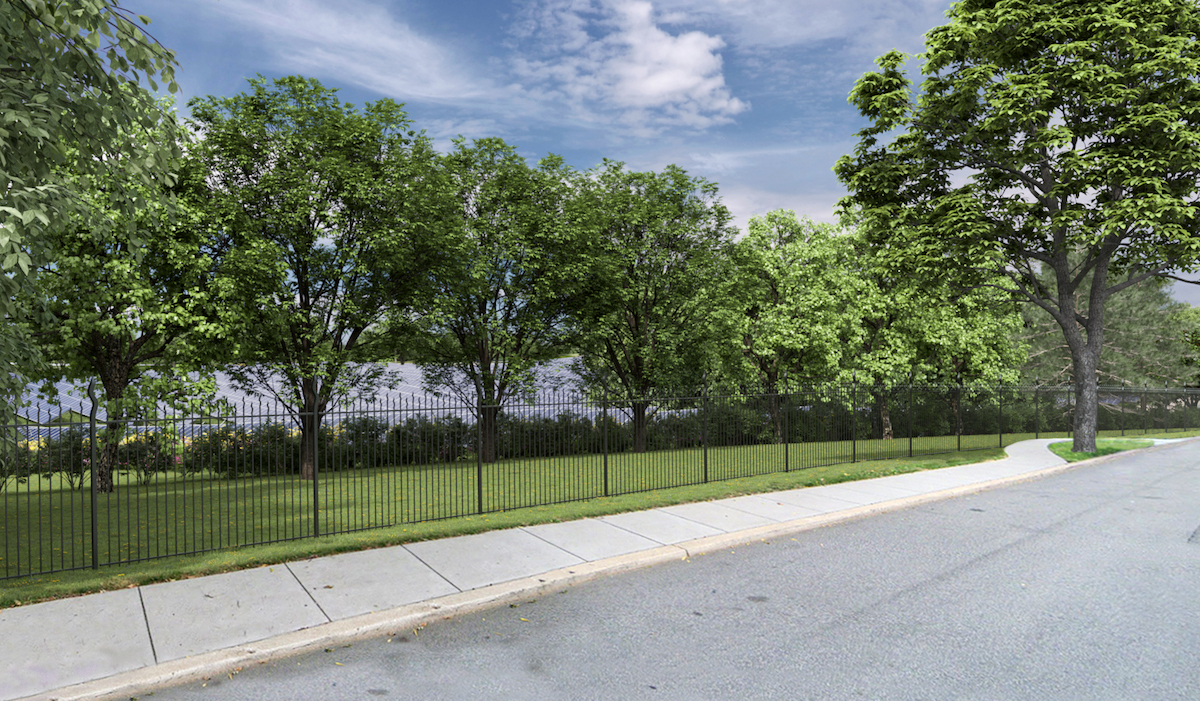

Rendering of the ground solar array to be built on Catholic University’s west campus. This green energy initiative will generate renewable energy equal to removing 1,547 cars from the road, and will provide educational opportunities for the community and local schools. Image provided by Standard Solar.
The Catholic University of America is partnering with Standard Solar to build the Washington metropolitan region’s largest urban solar array on the University’s campus, providing locally generated, renewable energy.
This initiative will make a significant contribution to the District of Columbia’s goal of 100% renewable energy by 2032 and carbon neutrality by 2050. Construction is anticipated to take place between June 2022 and spring 2023.
The solar array will save an estimated 7.115 metric tons of greenhouse gas emissions per year. This is the equivalent of removing 1,547 cars from the roads annually or eliminating the carbon dioxide emissions from nearly 800,630 gallons of gasoline, according to the EPA Greenhouse Gas Calculator.
“The west campus solar array will make a significant addition to Catholic University’s long-term commitment to sustainability. The clean energy generated through this program will contribute as well to the district’s goals for a healthy community and to the Vatican’s own initiative aimed at global sustainability. It is also important that this project include an educational component that will engage the community,” said Catholic University President John Garvey.
“Simply fantastic. We applaud Catholic University for taking this expansive leadership role in sustainability,” said John Finnerty, director of business development for Standard Solar, adding, “Through this innovative solar project, they are increasing their environmental stewardship and directly benefiting the DC community and generations of students.”
This project is the latest in Catholic University’s long-term commitment to sustainability. The campus already has 2,700 solar panels; four LEED-certified buildings; electric vehicle charging stations; a new energy-efficient, central hot and chilled water generation and campus distribution system that replaced a century-old steam system; and a five-year sustainability plan. The University was among the first Catholic universities globally to sign onto a Vatican initiative committing to a plan for environmental sustainability. Catholic recently landed for a second year on the Princeton Review’s Guide to Green Colleges.
Since 2016, carbon emissions on campus have declined by 28%. All of Catholic’s electricity is renewably generated. The University offers more than 150 courses plus internships related to sustainability, and is sponsoring a conference on April 22, Climate Change and the Future of Work.
In addition to the expansion of renewable energy for the region, the lease agreement with Standard Solar, a Maryland-based company that is a nationally recognized leader in the development, funding, ownership, and operation of commercial and community solar assets, will provide educational opportunities.
Students from grades K-12 will learn about sustainability and environmental stewardship with field trips, STEM projects, and access to real-time, web-based energy production monitoring. University students will have access to energy production data to conduct research.
The team developing this major project includes Catholic University; Standard Solar; Optony Inc., which served as project consultant during the planning phase and will serve as project manager advisor for the installation; and Jenner & Block LLP’s Energy Practice.
The ground-mounted solar array will be installed on an undeveloped portion of the University’s 173.4-acre campus, between Harewood Rd. and North Capitol St. NE, north of Michigan Ave. The west campus property (41.4 acres), acquired in 2004, currently is used for campus operations, including a tree nursery and staging areas for infrastructure projects. Heritage trees will be protected, and a perimeter screen of trees and plantings will be installed.